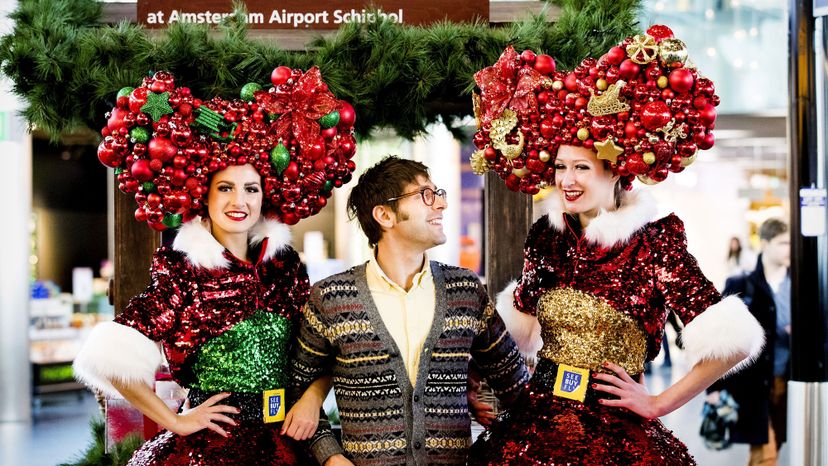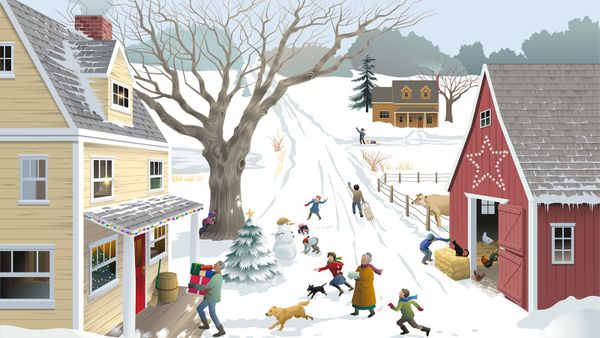Christmas Traditions in Holland

Dutch children in Holland, or the Netherlands, anxiously look forward to St. Nicholas Day on December 6. While they eagerly await the arrival of Sinterklaas, the people around them shop for gifts, write a little poem to accompany each one, and carefully wrap each gift to keep the contents a surprise to the receiver.
Sinterklaas is a kindly bishop. He wears red robes and a tall, pointed mitre on his head. Sinterklaas travels by ship from Spain to Amsterdam's harbor every winter. With him he brings his white horse and a huge sack full of gifts for the children. The mayor and all the people of Amsterdam flock to the harbor to greet Sinterklaas as he arrives. Bells ring out, the people cheer, and a brass band leads a parade through the streets. The parade stops at the royal palace, where the Queen welcomes Sinterklaas.
Advertisement
Families celebrate St. Nicholas Eve at home with lots of good food, hot chocolate, and a letterbanket. This is a "letter cake" made in the shape of the first letter of the family's last name. In some families, each person gets a little letterbanket with their first initial.
Then out come the carefully chosen and wrapped "surprises." Every gift is accompanied by a personal verse written by the giver about the recipient. And even though the gifts are from family and friends, they all are signed "Sinterklaas." No one is supposed to know who really gave the gift. The way they are wrapped adds to the surprise. A small gift might be hidden in a potato. A big gift might be kept a surprise by being hidden in the attic. The recipient opens a smaller gift that contains a note telling the recipient where to find the real package.
Finally, at the end of the evening, the children set their shoes by the fireplace. The shoes are filled with hay and carrots for the horse Sinterklaas rides through the streets on St. Nicholas Eve. The children sing a song about how much they hope the cold, wet, foggy weather will not keep Sinterklaas away that night. Then they tell their parents how well, or how badly, they have behaved throughout the past year. When well-behaved children awake in the morning, their shoes are filled with nuts, candy, and other surprises.
In the eastern part of Holland, farm families announce the coming of Christmas from the first Sunday of Advent, which is the fourth Sunday before Christmas, until Christmas Eve by blowing a horn made from hollow elder-tree branches. The horns make an eerie noise as they are blown at every farm in the neighborhood.
Later in December, Dutch families decorate a Christmas tree and trim the house with candles, evergreens, and holly. Some children hang up a stocking from the fireplace mantel on Christmas Eve, but there are no more presents after St. Nicholas Day for most Dutch children.
Families go to church together on Christmas Eve and then again on Christmas morning. They gather together for a family dinner of roast hare, venison, goose, or turkey. Eggnog and a mulled drink are specially made for this celebration. After dinner, the family gathers before the fireplace to tell stories and sing carols.
December 26 is called Second Christmas Day. Often the family goes out to a restaurant to eat on that day. Many concerts, recitals, and other musical performances make this Christmas Day special.

